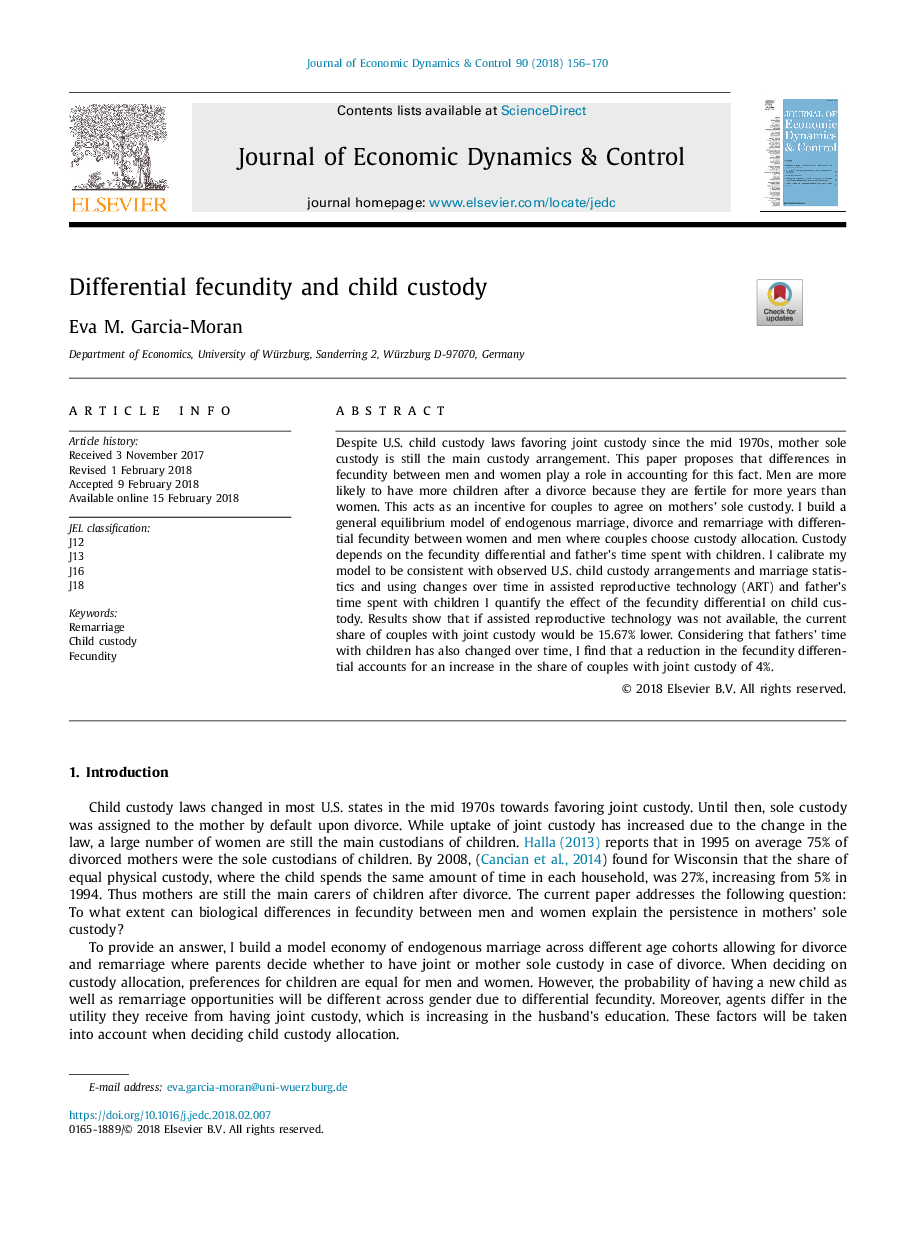| کد مقاله | کد نشریه | سال انتشار | مقاله انگلیسی | نسخه تمام متن |
|---|---|---|---|---|
| 7358696 | 1478655 | 2018 | 15 صفحه PDF | دانلود رایگان |
عنوان انگلیسی مقاله ISI
Differential fecundity and child custody
ترجمه فارسی عنوان
باروری دیفرانسیل و نگهداری از کودک
دانلود مقاله + سفارش ترجمه
دانلود مقاله ISI انگلیسی
رایگان برای ایرانیان
کلمات کلیدی
موضوعات مرتبط
مهندسی و علوم پایه
ریاضیات
کنترل و بهینه سازی
چکیده انگلیسی
Despite U.S. child custody laws favoring joint custody since the mid 1970s, mother sole custody is still the main custody arrangement. This paper proposes that differences in fecundity between men and women play a role in accounting for this fact. Men are more likely to have more children after a divorce because they are fertile for more years than women. This acts as an incentive for couples to agree on mothers' sole custody. I build a general equilibrium model of endogenous marriage, divorce and remarriage with differential fecundity between women and men where couples choose custody allocation. Custody depends on the fecundity differential and father's time spent with children. I calibrate my model to be consistent with observed U.S. child custody arrangements and marriage statistics and using changes over time in assisted reproductive technology (ART) and father's time spent with children I quantify the effect of the fecundity differential on child custody. Results show that if assisted reproductive technology was not available, the current share of couples with joint custody would be 15.67% lower. Considering that fathers' time with children has also changed over time, I find that a reduction in the fecundity differential accounts for an increase in the share of couples with joint custody of 4%.
ناشر
Database: Elsevier - ScienceDirect (ساینس دایرکت)
Journal: Journal of Economic Dynamics and Control - Volume 90, May 2018, Pages 156-170
Journal: Journal of Economic Dynamics and Control - Volume 90, May 2018, Pages 156-170
نویسندگان
Eva M. Garcia-Moran,
